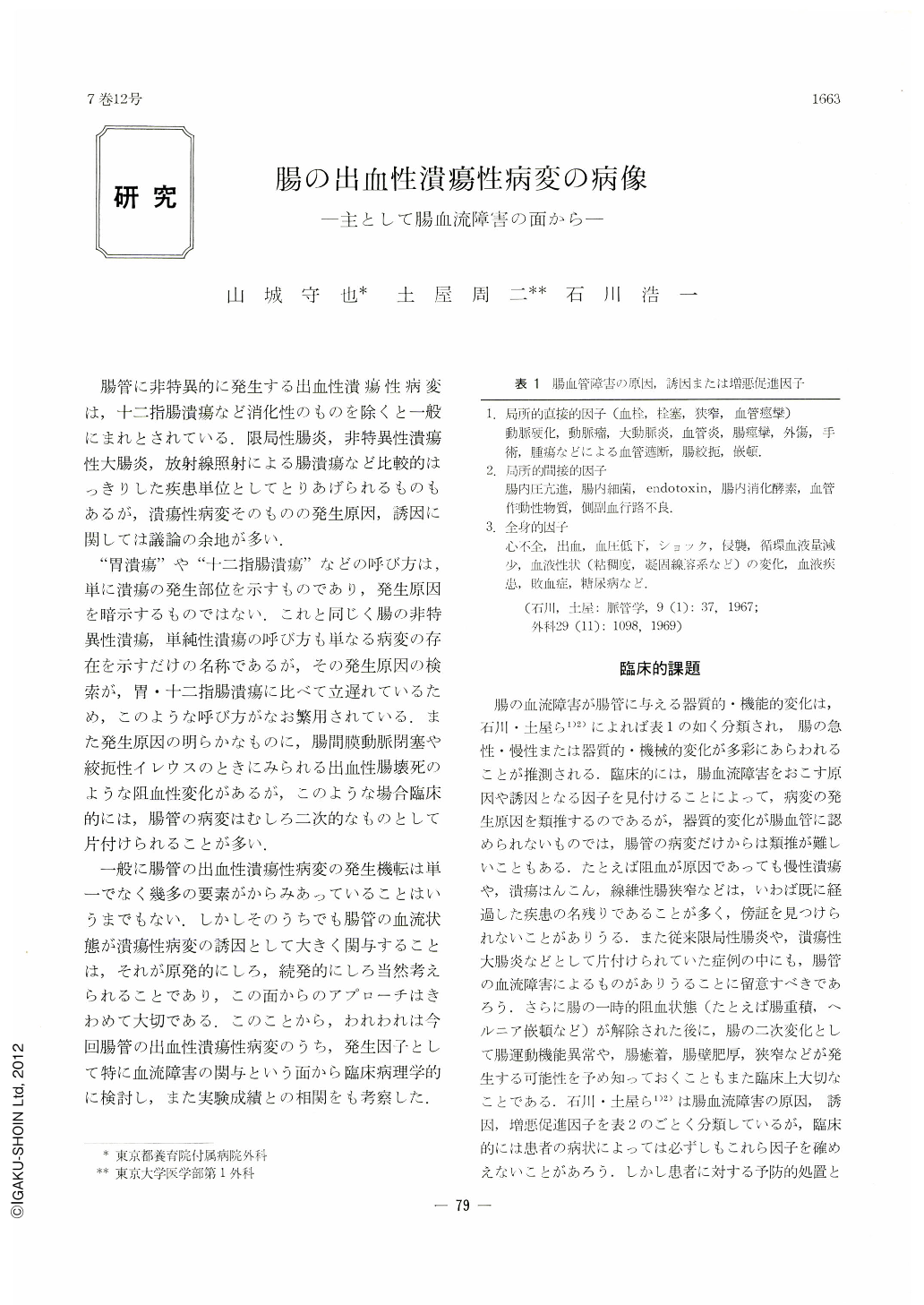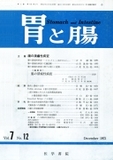Japanese
English
- 有料閲覧
- Abstract 文献概要
- 1ページ目 Look Inside
腸管に非特異的に発生する出血性潰瘍性病変は,十二指腸潰瘍など消化性のものを除くと一般にまれとされている.限局性腸炎,非特異性潰瘍性大腸炎,放射線照射による腸潰瘍など比較的はっきりした疾患単位としてとりあげられるものもあるが,潰瘍性病変そのものの発生原因,誘因に関しては議論の余地が多い.
“胃潰瘍”や“十二指腸潰瘍”などの呼び方は,単に潰瘍の発生部位を示すものであり,発生原因を暗示するものではない.これと同じく腸の非特異性潰瘍,単純性潰瘍の呼び方も単なる病変の存在を示すだけの名称であるが,その発生原因の検索が,胃・十二指腸潰瘍に比べて立遅れているため,このような呼び方がなお繁用されている.また発生原因の明らかなものに,腸間膜動脈閉塞や絞扼性イレウスのときにみられる出血性腸壊死のような阻血性変化があるが,このような場合臨床的には,腸管の病変はむしろ二次的なものとして片付けられることが多い.
Ulcerohemorrhagic lesions of the intestine due to ischemia have been studied from the aspect of intestinal vascular obstructions. These lesions present varied pictures such as sudden or insiduous onset, organic or functional disturbances, depending on the state or degree of ischemia (Ishikawa, Tsuchiya) . In this paper are studied chiefly that display no organic occlusion in the mesenteric blood vessels, with evaluation not only of clinico-pathological results but also of experimental outcome.
1. Acute hemorrhagic necrosis of the intestine
Clinically this is said to be most often seen in patients with disturbances in the cardiovascular system such as lasting shock, debilitated condition, or congestive heart failure. It is most often encountered in persons far advanced in age. The main blood vessels of the mesentery do not show any organic occlusion, but reduced blood flow to the intestine leads to decreased resistance of the intestinal mucosa and to congestion, and finally to bleeding and ulceration. The chief symptoms are diarrhoea, melena, distended abdomen and abdominal pain. In persons far advanced in age or in weakened condition, symptoms pertaining to the abdomen frequently fails to appear. Clinically acute necrosis is mostly seen in patients in generally weakened state. As no organic vascular occlusion is seen in these patients, seldom do they become an object of treatment.
2. Ischemic enteritis
This is seen when ischemia is slight or localized. Its symptoms are acute diarrhoea, melena and abdominal pain. Either it heals spontaneously or it is characterized by a specific course, leaving hypertrophy and constriction of the intestinal wall in its wake. As we have come across four such cases, we have studied about its diagnosis, treatment and causative factors.

Copyright © 1972, Igaku-Shoin Ltd. All rights reserved.


